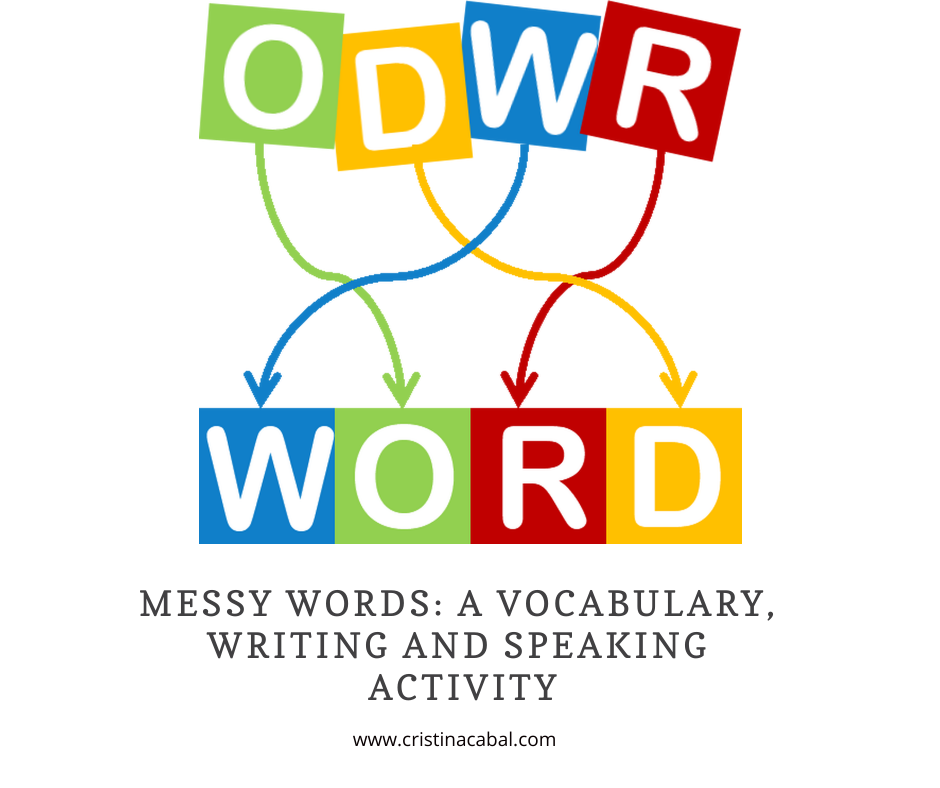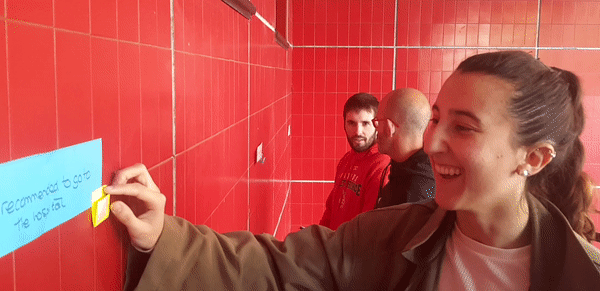It is October and autumn has officially hit. I am just beginning to come to terms with the fact that days are getting shorter and warm days are saying their goodbyes. Well, welcome autumn! I am all here for you!
Let’s kick it off this new season with a vocabulary revision activity that aims at reinforcing vocabulary while at the same time providing an opportunity for students to stretch their legs and interact with other students in the classroom. Gallery-walks, my favourite!

Aim:
- to reinforce the vocabulary of the lesson
- Use the vocabulary in context by
- writing an open-ended question containing the target word/expression
- answering the question by using the gallery-walk class dynamics
Procedure:
Before the class
- Choose a few words you want to revise. I suggest 8-10 words.
- Fold a regular sheet of paper horizontally and cut it in half. You will get two slips of paper. This is a good opportunity to recycle the back of spare photocopies from other courses.
- Write the letters of each word/expression you want to revise in random order. Number each of the slips of paper for easier reference.

During the class:
Step 1. Slips of paper on the walls
Put up the slips of paper on the walls of the class and ask students in pairs or in threes to stand up and work out what the hidden word on each slip of paper is. Ask them to number them as displayed on the walls. The first pair to have all the words, rings the bell (needless to say, there should be one on my table) and the rest of the class has one extra minute to finish this part.
Ask students to sit down.
Step 2. Writing open-ended questions
- Students continue working in their pairs. Assign the pairs two of the words/expressions on the walls and ask them to write two open-ended questions –one per term– related to “education” (this is the topic this week) containing the word or expression.
For example, one of the words was “state-funded school” and one of the questions was “Would you send your children to a state-funded school? Why (not)?”
- Give them small cards to write their questions and, using sellotape, place them next to the term the question refers to. Ask them to write their names at the back of the card so that you know who has written the question and to give feedback.
- Quickly correct the questions on the walls, and if there is more than one per word, choose the best one, which will remain displayed together with the slip containing the word in random order. Give the discarded questions back to their owners and allow them some time to focus on their possible mistakes.
Step 3. Speaking. Gallery walks
With the words and the questions displayed on the walls, ask students in pairs to stand up and choose a station (slip+card).
Instruct them to answer the question elaborating on the answer. Allow 5 minutes/station and then ask them to move clockwise to the next station. Repeat procedure.
Until next post! 🙂








